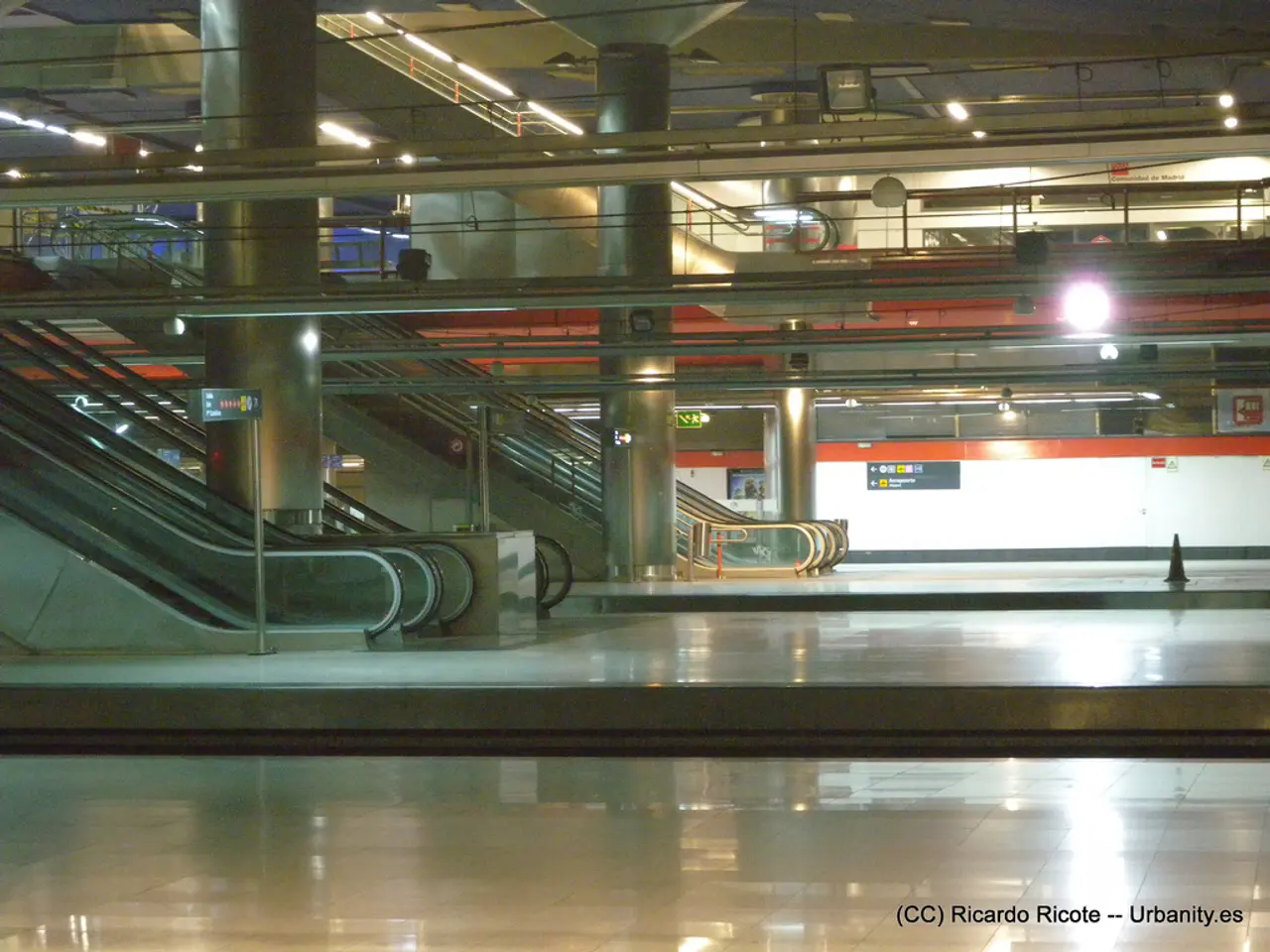Berlin's Escalators Frequently Malfunction: Disarray Prevails at the Zoo and the Bundesplatz
Berlin's public transport system is facing a significant challenge with a notable number of escalators and elevators out of service at various S-Bahn stations as of mid-July 2025. Key urban and regional stations like Anhalter Bahnhof, Bundesplatz, Gesundbrunnen, Hauptbahnhof, and Zoologischer Garten are reporting escalator defects and outages[1].
The reasons behind these breakdowns and extended repair times are manifold. Aging infrastructure is a major concern, with many stations housing old escalators and elevators that require frequent repairs or replacement[1]. The coordination among operators, including S-Bahn Berlin GmbH, DB InfraGO AG, and BVG, can also add logistical challenges.
Moreover, ongoing infrastructure modernization projects, such as the Berlin-Hamburg line modernization, demand significant resources and attention, potentially extending repair timelines or complicating scheduling[2][4]. High demand and usage, especially from an aging population increasingly reliant on vertical mobility aids, also put pressure on escalator reliability[3].
Funding and resource allocation could also be factors. While Germany has launched a substantial infrastructure fund for various sectors, including transport, enhanced demand could outpace maintenance capacity, leading to longer outages[3].
As a mitigation, Berlin offers the BVG Muva service free of charge for persons with reduced mobility during elevator/escalator outages[1].
The escalators at S-Bahnhof Friedrichstraße have long been a source of frustration due to their unique characteristics. With little space and an unusually high angle of inclination, they have often been perceived as frequently defective, despite data suggesting that only the number, not the proportion, of non-functional installations is high[2].
In 2012, two escalators at S-Bahnhof Friedrichstraße were non-functional for almost an entire year[5]. The renovation of these escalators involved painstaking disassembly and reassembly[6]. Custom-made parts were needed due to the steep incline, as mentioned in a 2009 report by the Berliner Kurier[7].
The costs for maintenance and repair work on the escalators at Friedrichstraße were not specified by the train company spokesperson, Burkhard Ahlert. He also mentioned that the emergency stop on the escalator at Friedrichstraße is often pressed and attributed some downtime to vandalism[8].
Vandalism is on the rise, with destructive power and frequency leading to downtimes of several weeks and immense costs[9]. The regional office of Deutsche Bahn AG in Berlin cited vandalism as the cause for the particular outliers at the Bundesplatz and the S- and U-Bahn station Zoological Garden[9].
Moving staircases, due to their technical complexity and high usage, are maintenance-intensive[10]. However, in Berlin, Brandenburg, and Mecklenburg-Vorpommern, 93.2% of escalators were functional between January 1, 2022, and mid-May 2022[11].
Despite the challenges, efforts are being made to improve the situation. Ahlert mentioned the possibility of installing barriers at the top of the escalator at Friedrichstraße[6]. The focus remains on modernizing and maintaining critical transit infrastructure to ensure a reliable and accessible public transport system for all.
[1] Berliner Morgenpost [2] Tagesspiegel [3] Der Spiegel [4] Deutsche Bahn [5] Berliner Zeitung [6] Deutsche Bahn Spokesperson [7] Berliner Kurier [8] Deutsche Bahn Spokesperson [9] Berliner Morgenpost [10] Deutsche Bahn [11] Deutsche Bahn
In the context of Berlin's public transport system, funding and resource allocation could be factors in extending the repair times of aging escalators and elevators, as enhanced demand may outpace maintenance capacity, thanks to a substantial infrastructure fund launched by Germany for various sectors, including transport [3]. The industry, finance, and transportation sectors interact in managing and upgrading the state of Berlin's escalators, with operators like S-Bahn Berlin GmbH, DB InfraGO AG, and BVG needing coordination to address the logistical challenges [1].




